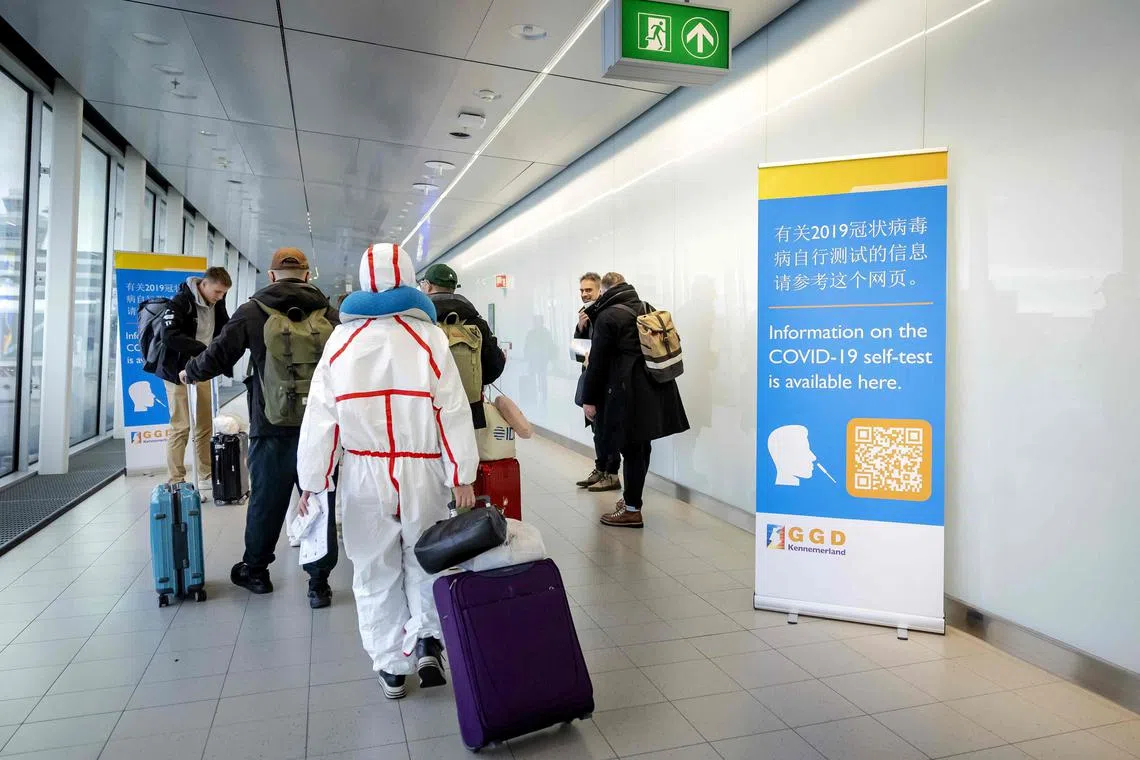For subscribers
All around the world, Covid-19 surveillance is faltering
That, rather than the surge of cases in China, is the main reason for worry
Sign up now: Get insights on Asia's fast-moving developments

Many countries have increased their testing of arrivals from China.
PHOTO: AFP
The Economist
Follow topic:
Jan 5, 2023, was the third anniversary of the day that researchers at the Wuhan Institute of Virology in China isolated a coronavirus which had caused a cluster of mysterious pneumonia cases in one of the city’s hospitals. This new virus, named Sars-CoV-2 by the World Health Organisation (WHO), subsequently infected most of the world’s population. In parts of Europe, the percentage of people who have never caught it is probably in single digits.
Vaccines and prior infections have now slowed Sars-CoV-2’s spread. But it has evolved partial means to evade the immunity they confer. Reinfections have become routine. In the light of this, attention has turned once more to China. The country in which Covid-19 started has only recently followed the rest of the world in abandoning isolation and lockdowns. That, combined with its patchy record on vaccination – meaning that many Chinese have had no opportunity to acquire immunity from either an infection or a vaccine – has resulted in a surge of cases. And the outside world has responded.

